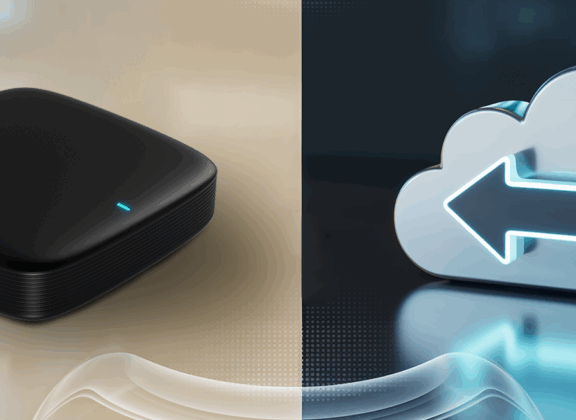The ability to pause, rewind, and resume live television has evolved from a premium luxury into a standard expectation in IPTV. Whether viewers want to catch a missed line of dialogue, replay a highlight, or pause during an interruption, these features have become essential. Behind the scenes, however, two distinct technologies make this possible: local timeshift buffering and network-based personal video recording (nPVR). Both solutions deliver similar functionality to the user, but they differ fundamentally in how they handle storage, responsiveness, and reliability. Understanding these differences is key for anyone considering an IPTV set-top box or media player.
Local Timeshift Buffers in Practice
With a local timeshift buffer, the device captures live TV and writes it to temporary storage on the user’s hardware. This could be internal memory, a connected USB drive, or even a dedicated hard disk. From the viewer’s perspective, the live stream becomes a file that can be paused, rewound, or fast-forwarded without depending on the provider’s infrastructure.
The biggest strength of this method lies in its independence. Playback controls are handled entirely by the device, delivering instant responsiveness and immunity from network fluctuations. However, there are practical limits. The buffer space is finite, usually holding only a few hours of video before overwriting older data. Hardware quality directly influences performance—fast storage ensures smooth navigation, while slower or smaller devices may struggle with high-definition streams or extended usage. This makes local buffering ideal for short-term control but less suited to long-term archiving.
How Network nPVR Works
A network nPVR shifts the recording process from the viewer’s hardware to the IPTV provider’s servers. Instead of saving content locally, the stream is recorded in the cloud, and users access it through their set-top box or media player. This model supports pause, rewind, and catch-up functionality without requiring extra storage devices at home.
Its major advantage is scale. Since recordings are stored centrally, users can access their content from multiple devices, and providers can offer extended catch-up libraries that exceed the limits of personal storage. Yet, convenience comes with trade-offs. Availability depends on the provider’s policies, licensing agreements, and server performance. In some regions, broadcasters restrict how long content can be kept or forbid recording of premium channels altogether. The quality of playback also hinges on broadband stability—poor connectivity can lead to delays or interruptions.
Comparing Experience and Limitations
The differences between local and network solutions become clear when evaluating real-world performance. Local buffers excel in responsiveness: actions like pausing or skipping back occur instantly, without reliance on the internet. This makes them dependable even with modest broadband speeds. But the storage ceiling restricts flexibility, limiting how far back the user can rewind or how much content can be retained.
By contrast, network nPVR offers far greater flexibility, sometimes with days or even weeks of stored programming available. This feature is attractive for users who want to catch up on missed broadcasts at their convenience. However, these benefits depend on service availability, licensing restrictions, and a stable internet connection. As a result, the nPVR experience can vary significantly between providers and regions.
The Importance of Device and Service Integration
For customers shopping for IPTV hardware, compatibility with both local and network-based approaches should be a priority. Devices optimized for local buffering need fast and reliable storage connections, such as USB 3.0 or SSD support, to ensure smooth playback. On the other hand, devices that rely heavily on nPVR must emphasize strong network performance, reliable middleware, and intuitive user interfaces for accessing remote content.
Equally important is software design. An efficient, user-friendly interface makes the difference between a seamless experience and a frustrating one. Devices that combine both local buffering and nPVR support provide the most balanced solution, offering immediate responsiveness while also enabling extended recording options through the network.
Choosing the Right Solution
Ultimately, the decision between local timeshift buffering and network nPVR depends on personal viewing habits and technical environment. Those who prioritize speed, reliability, and independence from their provider will value strong local buffer functionality. Meanwhile, viewers who prefer extensive access to past broadcasts and the convenience of cloud storage will benefit more from nPVR-based services, provided they are supported without undue limitations.
Timeshift and pause features have redefined television from a passive stream into an interactive experience. Local buffers provide instant control and independence but are limited by hardware. Network nPVR extends flexibility and access but ties the user to provider policies and connectivity quality. For most IPTV viewers, the optimal solution is a hybrid—local buffering for immediate actions and network recording for long-term convenience. Recognizing how each system works ensures customers can select the right device and service combination, achieving the best possible balance between responsiveness and flexibility.
